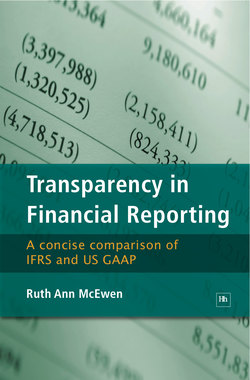Читать книгу Transparency in Financial Reporting - Ruth Ann McEwen - Страница 8
На сайте Литреса книга снята с продажи.
B. Hierarchy of inputs
ОглавлениеIn addition, FAS 157 establishes a revised hierarchy of inputs to be used in determining fair value estimates. Comparable to FAS 107, the hierarchy gives the highest priority to observable market inputs and the lowest priority to unobservable market inputs as follows:
• Level 1 inputs are quoted prices (unadjusted) in active markets for identical assets or liabilities that the reporting entity has the ability to access at the measurement date;
• Level 2 inputs are inputs other than quoted prices included within Level 1 that are observable for the asset or liability, either directly or indirectly;
• Level 3 inputs are unobservable inputs for the asset or liability, (e.g. inputs derived through extrapolation or interpolation that cannot be corroborated by observable market data).
Level 1 inputs transparently reflect fair value. Fair valuation of either financial or non-financial assets based on recent sales for identical assets in functioning markets conveys the underlying true value of the assets and reflects the substance of fair valuation as promulgated by IFRS. The same can be said for non-financial or financial liabilities using Level 1 inputs: such comparisons communicate the underlying outflow required to settle the liability and they fairly reflect the intent of periodic revaluation.
Level 2 inputs include:
(a) quoted prices for similar assets or liabilities in active markets;
(b) quoted prices for identical or similar assets or liabilities in markets that are not active;
(c) inputs other than quoted prices that are observable for the asset or liability (e.g. interest rates and yield curves observable at commonly quoted intervals, volatilities, prepayment speeds, loss severities, credit risks, and default rates);
(d) inputs that are derived principally from or corroborated by observable market data by correlation or other means (market-corroborated inputs). Level 2 inputs are more problematic. Use of “similar” prices invariably leads to subjectivity in determining exactly which prices are similar to the asset or liability being revalued. While current US GAAP requires extensive subjectivity, Level 2 estimation exacerbates what is already a well documented problem in US financial reporting: understatement of risk and manipulation of earnings.
Level 3 inputs should be used to measure fair value to the extent that observable inputs are not available, thereby allowing for situations in which there is little, if any, market activity for the asset or liability. However, FAS 157’s emphasis that the fair value objective in Level 3 continues to be an exit price from the perspective of a market participant may diminish transparency and certainly increases the complexity of the financial statements.
Under the guidance of FAS 157, entities must estimate these inputs not from an internal perspective, but from the view of an external party who would exchange for the asset, or assume the liability, at a fair price reflecting appropriate risk levels. The guidance provided by FAS 157 seems to suggest that external markets could or would price the risk of an asset retirement obligation in 2010 to decommission a nuclear power plant in 2030 and that an external party would be willing to assume the risk.
FAS 157 uses the term ‘inputs’ to refer broadly to the assumptions that market participants would use in pricing the asset or liability, including assumptions about risk. It indicates that valuation techniques should maximize the use of observable inputs (Levels 1 and 2) and minimize the use of unobservable inputs (Level 3). Observable inputs are those that reflect assumptions market participants would use in pricing the asset or liability developed, based on market data obtained from sources independent of the reporting entity. Unobservable inputs are inputs that reflect the reporting entity’s own assumptions about the assumptions (emphasis added) market participants would use in pricing the asset or liability developed based on the best information available in the circumstances. [14] Valuation under the Level 3 provisions of FAS 157 is based not on entity-specific estimates, but on estimates of what external parties would estimate. This uncertainty seems counterintuitive and is likely to diminish transparency.
